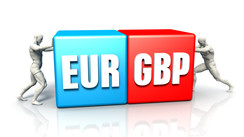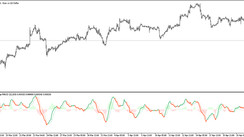The dollar resumed growth after a 2-week fall the days before. So, at the time of publication of this article, futures for the DXY dollar index are traded near 101.90, 60 points above yesterday's low. The growth driver for DXY was today's publication of statistics from the Eurozone, according to which the consumer price index (CPI) for the Eurozone rose in May by +8.1% (in annual terms), which was higher than the forecast of growth by +7.7% and the previous values +7.4%. The annual core CPI also grew stronger than the forecast and the previous value of +3.5%.
The share of the euro in the DXY dollar index is approximately 57%, so the weakening of the euro led not only to the growth of DXY, but also to the fall of the EUR/USD pair. It has declined from today's high of 1.0779 and is traded near 1.0700 at the time of writing.
Economists expect inflation to accelerate in the Eurozone, and they see the reason for this in a new round of rising energy prices, while the EU introduces more and more new sanctions against Russian energy carriers. Food prices have also risen strongly, and Russia is known to be the largest supplier. Thus, Russia's share in the world grain supply is approximately 18%, and Ukraine's 10%, and the military conflict in Ukraine, where Russia is conducting a special military operation, affects not only the rise in food prices, but also energy, primarily for Europe.
Inflation data released this morning reinforce expectations that the ECB will raise rates in July for the first time in more than 10 years.
But even in this scenario, the ECB will lag behind the Fed in the pace of monetary tightening. As you know, during the May meeting, the Fed leaders decided to raise rates by half a percentage point. A typical Fed interest rate change is 0.25%. Fed officials also announced that a three-month program to reduce the balance sheet, which reached $9 trillion, will begin on June 1 (balance reduction is one of the components of the monetary policy normalization program that the Fed is implementing to slow down inflation). Economists now predict a continuation of the Fed's tough policy and an increase in the interest rate by another 50 basis points, to the level of 1.50%. Thus, this cycle of policy tightening will be the fastest in the last 20 years.
As we noted earlier, the growing divergence of the conditional monetary policy curves of the Fed and the ECB is one of the main factors that will contribute to a further decline in EUR/USD, and the ECB interest rate increase expected in July is unlikely to turn the tide in favor of the euro, although it will have a positive effect on its quotes in the short term.
And today, market participants will follow the publication (between 13:00 and 14:30 GMT) of a block of important macro statistics for the US, as well as the course of the meeting between US President Biden and Fed Chairman Powell. During this meeting, measures of the financial authorities to curb inflationary pressure will be considered. If the results of this meeting are positively received by investors, then the US dollar will receive additional support, including in the EUR/USD pair.






